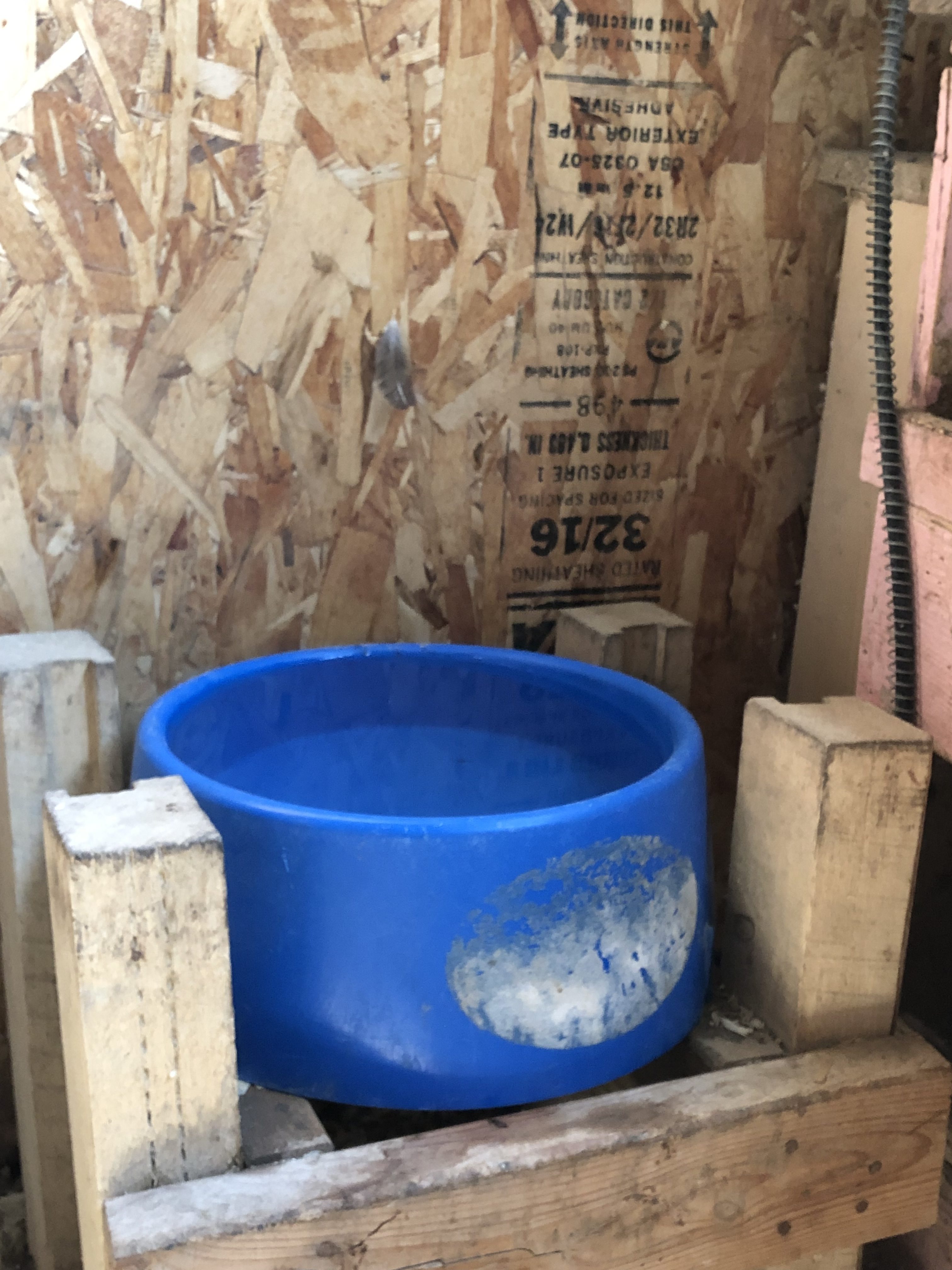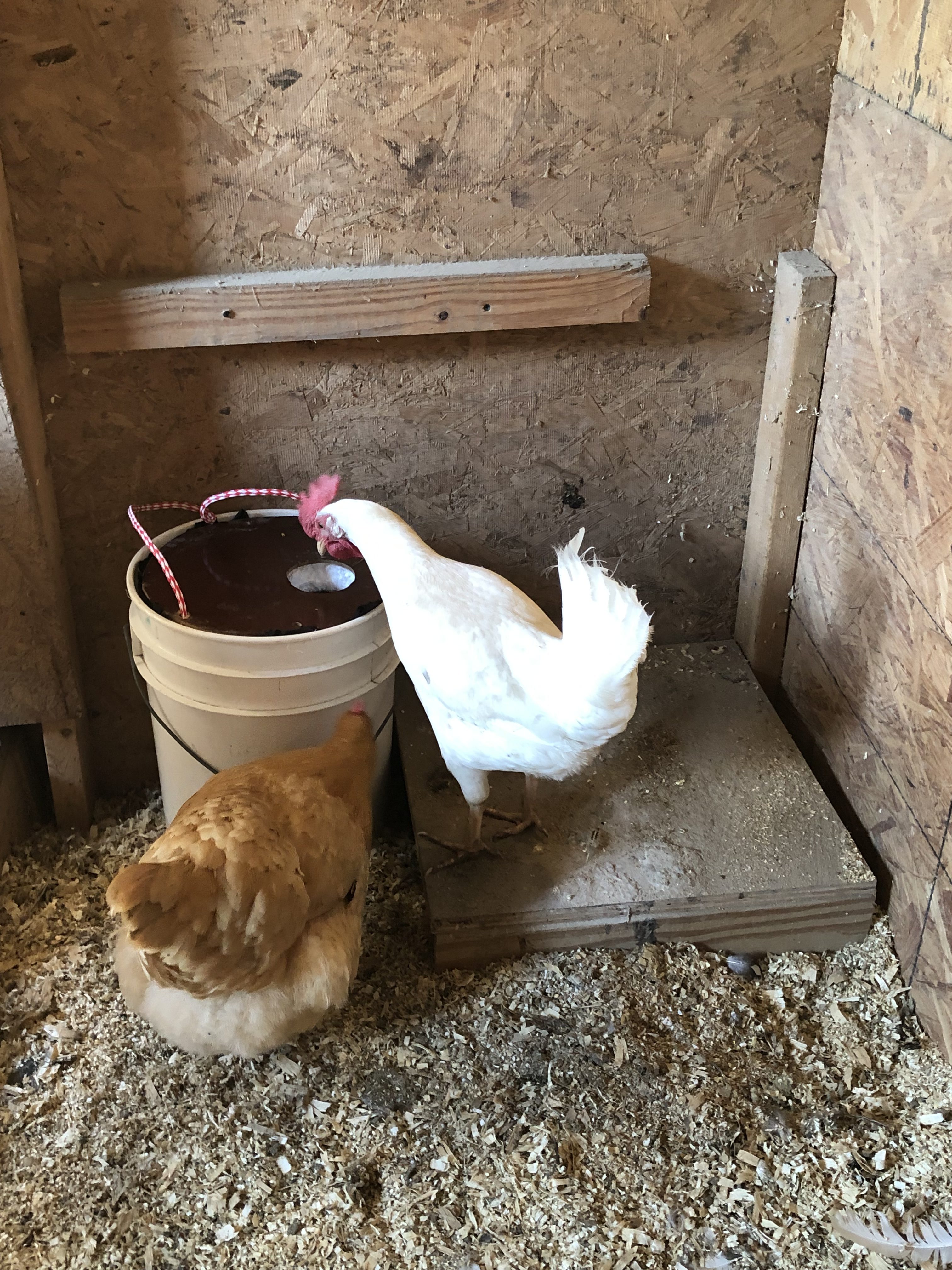Watering Backyard Chickens – Winter Water

Chickens love to drink. Fortunately, their favorite beverage is cool clean water. During summer’s inferno their panting helps them stay cool but to stay hydrated they need to drink plenty of water.
Come winter’s chill their need to drink declines but doesn’t disappear. Even during extreme cold they must drink several times every day. That poses a problem.
Chickens can’t hydrate from ice or snow and must have liquid water available. During extreme cold a bucket or waterer freezes solid in just a few hours.
For centuries cold climate chicken keepers had to deliver buckets of water to the coop several times a day then retrieve, and thaw ice filled containers. That remains an effective way to keep liquid water in the coop but constantly delivering water several times a day is wearisome.
Fortunately, there are easier ways to keep coop water liquid no matter how low the temperature sinks.
Let Electricity Do the Work
By far the easiest way to keep ice at bay is to let electricity do the work. Many types of electrically heated water founts are sold in stores that sell baby chicks, feed, and supplies. They all work.
Most have a thermostat that only warms water when the temperature drops below freezing. Thermostats soften the electric bill.
A somewhat less expensive and more widely available heated waterer is designed for dogs.
These have heating coils beneath a plastic bowl. They work well with chickens but are low to the ground, allowing birds to scratch litter into them and foul the water.
A simple homemade cradle of scrap lumber elevates the bowl a few inches above the litter and stabilizes it. Hens easily drink without fouling or tipping over the water.
Electrically heating waterers need special care to reduce fire danger and shocks.
It’s important to keep wires out of reach of chickens and away from flammable litter.
Many backyard coops lack electricity, but there are few items as useful in managing chickens.
Power in the coop allows chicks to be brooded there and lets the owner switch on lights to check on the birds or complete chores after sunset. It also allows lighting the coop early mornings on dark winter days to stimulate egg production.
Hiring an electrical company to run a safe wire to the coop may not be expensive and makes keeping chickens more convenient.
If There’s No Electricity
Most small backyard coops lack electricity, but several techniques help keep drinking water from freezing and some can even help slightly warm the coop, keeping hens comfortable.
Here are a few possibilities:
- Take advantage of free heat from the sun. Many lightweight backyard coops can be easily moved. Set the coop so its window faces south. Put a water bucket just inside the window so the sun’s warmth helps keep it ice free. Black absorbs solar energy effectively, so a black bucket or black painted waterer set in the sun will stay ice-free longer than a silvery one. Black rubber buckets sold in farm supply stores are flexible, making it make it rather easy to crack and dump out ice that forms inside. They are much more convenient than metal pails.
- Insulate the coop. A few inches of insulation keeps waterers inside ice-free longer on cold nights and makes the coop’s interior warmer in winter and cooler in summer. Comfortable chickens are productive and pleasant.
- Make a freeze resistant waterer. There are several ways to do this. Probably the easiest is to buy a small plastic camping or picnicking cooler. They are well insulated and small ones are just the right size for chickens to drink from. Either use a saber-type saw to cut a two- or three-inch diameter hole in the lid or put a weighted board over most of the cooler, leaving a small water surface exposed so the hens can drink. Simply fill the cooler with warm water, secure the lid, and place it in the coop. Chickens quickly learn to drink from the small hole. A cinder block placed next to the cooler will help the birds reach water.

Another way to create an inexpensive freeze-resistant waterer is to buy a Styrofoam bait bucket sold in northern fishing supply stores.
They are made to keep water that holds minnows stay liquid when out on a frozen lake.
Insulated buckets only cost a few dollars, and some are made to fit snugly inside a plastic five-gallon plastic pail.
Insulated bait buckets come with a Styrofoam lid.
Chickens will peck and destroy Styrofoam, so it needs to be protected.
Either a plastic pail lid or piece of quarter inch plywood with a two to three inch diameter hole cut in it will let chickens drink while protecting the Styrofoam from their pecking.
Styrofoam isn’t completely leak proof.
Water oozes slowly through it, so lining the inside of the bucket with a plastic bag makes it watertight.
When an icy wind blows remember the girls in the coop. They get thirsty on even the coldest days and need a drink.
Fortunately, there are many ways to keep water from freezing during even the chilliest winder days.
